Symphyotrichum ciliatum
Symphyotrichum ciliatum is a species of flowering plant in the family Asteraceae native to North America and eastern Eurasia. Commonly known as rayless annual aster and rayless alkali aster, it is an annual, herbaceous plant that may reach over 70 centimeters (2 feet 4 inches) in height. Each flower head has many whitish then pink disk florets and no ray florets ("rayless").[3]
| Symphyotrichum ciliatum | |
|---|---|
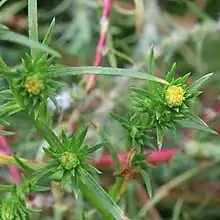 | |
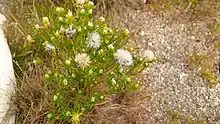 | |
| Scientific classification | |
| Kingdom: | Plantae |
| Clade: | Tracheophytes |
| Clade: | Angiosperms |
| Clade: | Eudicots |
| Clade: | Asterids |
| Order: | Asterales |
| Family: | Asteraceae |
| Tribe: | Astereae |
| Subtribe: | Symphyotrichinae |
| Genus: | Symphyotrichum |
| Subgenus: | Symphyotrichum subg. Symphyotrichum |
| Section: | Symphyotrichum sect. Conyzopsis |
| Species: | S. ciliatum |
| Binomial name | |
| Symphyotrichum ciliatum | |
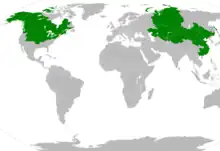 | |
| Native distribution[2] | |
| Synonyms[2] | |
|
Basionym
Alphabetical list
| |
Conservation
As of October 2022, NatureServe listed S. ciliatum as Secure (G5) globally; Secure (S5) in Nebraska; Apparently Secure (S4) in Alberta, British Columbia, Manitoba, Northwest Territories, Saskatchewan, and Montana; Vulnerable (S3) in Nunavut and Ontario; Imperiled (S2) in Wyoming; Critically Imperiled (S1) in Yukon; and, Possibly Extirpated (SH) in Kansas, Missouri, and Oklahoma. Its global status was last reviewed on 13 May 2016.[1]
Gallery
Citations
References
- Brouillet, L.; Semple, J.C.; Allen, G.A.; Chambers, K.L.; Sundberg, S.D. (2006). "Symphyotrichum ciliatum". In Flora of North America Editorial Committee (ed.). Flora of North America North of Mexico (FNA). Vol. 20. New York and Oxford: Oxford University Press. Retrieved 27 January 2021 – via eFloras.org, Missouri Botanical Garden, St. Louis, MO & Harvard University Herbaria, Cambridge, MA.
- NatureServe (1 October 2022). "Symphyotrichum ciliatum Alkali American-aster". explorer.natureserve.org. Arlington, Virginia. Retrieved 29 October 2022.
- POWO (2019). "Symphyotrichum ciliatum (Ledeb.) G.L.Nesom". Plants of the World Online. Royal Botanic Gardens, Kew. Retrieved 17 July 2021.

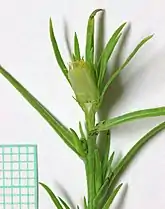
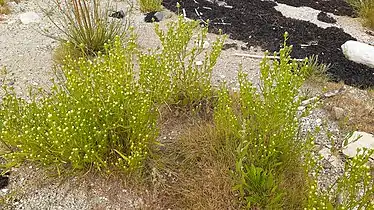
_-_Saskatoon%252C_Saskatchewan_2014-10-13.jpg.webp)